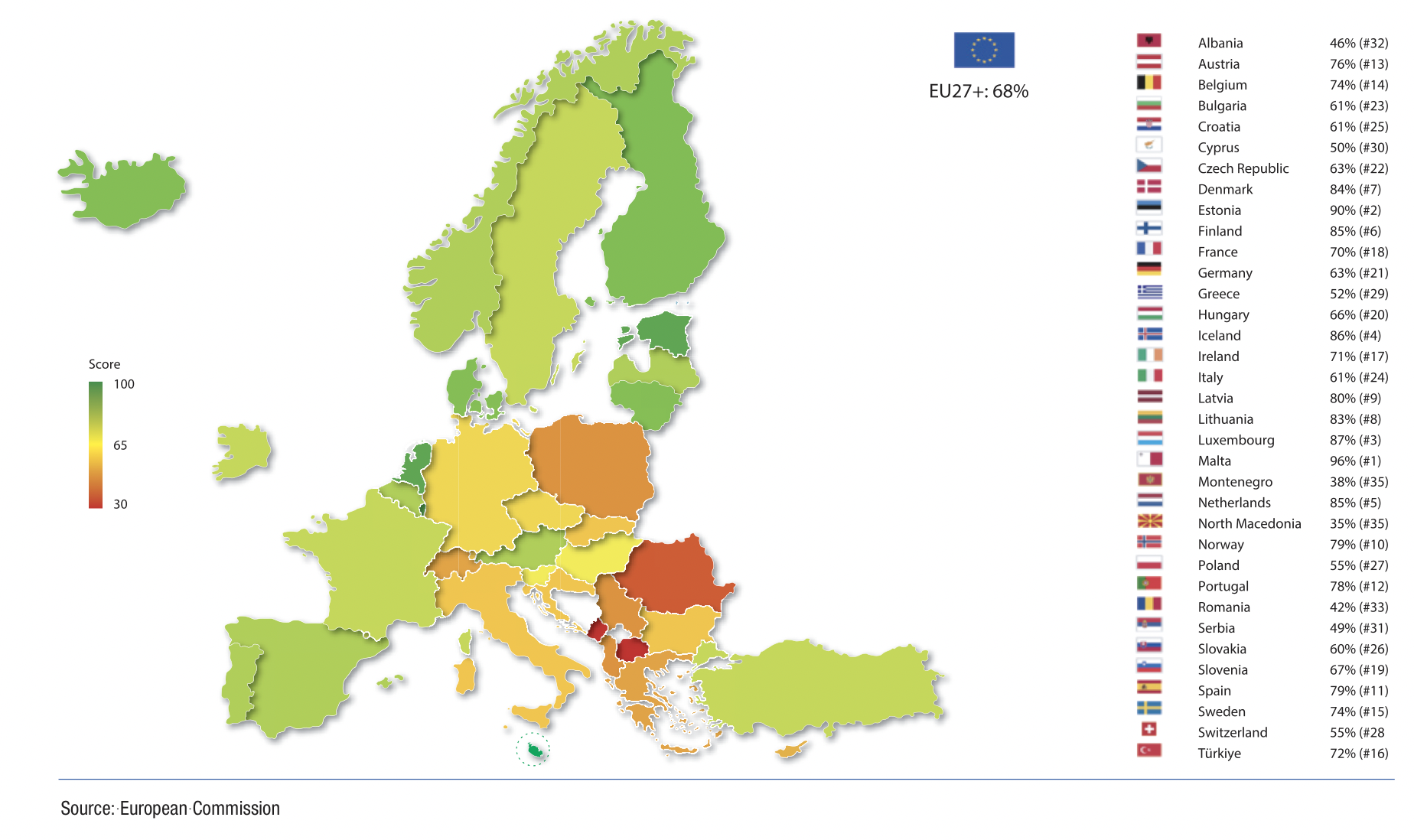Ireland has mid-ranking eGovernment maturity

The most recent European eGovernment benchmark, published in July 2022, has ranked Ireland 17th out of 35 European nations for eGovernment maturity, with a score of 71 per cent, slightly above the European average of 68 per cent.
The eGovernment Benchmark sheds light on eGovernment in 35 European countries, referred to as the ‘EU27+’ which are the 27 European Union member states, Iceland, Norway, Switzerland, Albania, Montenegro, North Macedonia, Serbia, and Türkiye.
The average European score shows that there is a considerably way to go if the potential benefits of maximised eGovernment maturity are to be realised throughout the continent. Although Ireland is ranked slightly above average, there is scope for improve in all European nations, hence a set of policy recommendations from the European Commission are included in the benchmark, with the aim to uplift eGovernment maturity across the continent.
Three policy takeaways
Rethink the user: With many different types of users to serve, the report outlines how user-centric design must meet each person’s needs, including those with certain disabilities or with low digital skills. This study shows that governments can improve their provision of inclusive eGovernment services. To achieve this, the report recommends that governments:
- consider the needs of both citizens and businesses, for which currently 77 per cent and 91 per cent, respectively, of services are online;
- tailor services for nationals as well as cross-border users, who can complete 81 per cent versus 46 per cent of services digitally;
- ensure perceivable, operable, understandable, and robust websites for persons with disabilities, as only 16 per cent of the websites currently meet selected web accessibility criteria;
- serve users with different devices, as 77 per cent of selected services are accessible online via desktop computers, while only 62 per cent are accessible via smartphones and tablets, with lower eID, eDocuments, and authentic sources integration for mobile users; and
- co-create services with users, currently done by one third of the governments, as well as raise awareness, simplify services, offer support, and provide alternative channels to embrace eGovernment diversity, guided by European values and principles.
Realign the user journey: Citizen and business life events often involve services from multiple government entities. The report states that well-orchestrated government networks are needed to serve users along their entire journey. Achieving this will involve:
- overcoming service gaps across multiple layers of government. In Europe, 84 per cent of all services provided by central government organisations are available online, while 71 per cent of regional services and only 60 per cent of local services can be completed digitally; and
- leveraging the role of government portals, through which 93 per cent of all services can be found. This will enable users to complete all services related to their life event via single one-stop-shops. Breaking down departmental silos where possible and acting as one government with clear governance will ease end-to-end service delivery and ensure user journeys can be completed in full and all in one interaction.
Reinforce the interoperability ambition: Well-implemented and interoperable key enabling technologies build the foundations for the next generation of eGovernment, the report explains. Public administrations, established IT providers, innovative start-ups, and other innovators are urged to:
- promote interoperable data exchange to deliver more services proactively and increase the current level of just 6 per cent. Connected and consistent systems also enable governments to pre-fill more online application forms with information already known, currently at 67 per cent. Whenever personal data is reused in forms, this should be visible in more personal data monitoring solutions, currently available with 58 per cent of governments; and
- pave the way for future eIDs, for example by resolving login issues, as currently less than half (46 per cent) of the services allow a single sign-on. Moreover, users can login with their eID for three quarters of central government services, but only for about one-third of regional and local administrations. Wider implementation of interoperable solutions will create a more consistent eGovernment experience for different users, different services providers, and across European countries.
Department of Public Expenditure, NDP Delivery and ReformA Department spokesperson said: “The European Commission’s eGovernment Benchmark 2022 focused on four key dimensions: user centricity, transparency, key enablers and cross-border services. Ireland considerably outperformed the EU27+ average on three of the four dimensions. On the fourth, key enablers, Ireland is continuing to rapidly improve against the assessed technical preconditions. “In terms of uptake and usage of the State eID, Ireland is one on the fastest growing countries in the world and our developing digital wallet will provide strong ID on mobile and tablet devices. Moreover, our digital postbox is gaining traction and the recently commenced Gov.ie 2.0 project will introduce e-forms, life events, and an e-document archive. This progress in providing digital access to public services is reflected in Ireland’s position of 6th out of 27 EU members in the European Commission’s Digital Public Services in the Digital Economy and Society Index 2022.” |
eGovernment maturity in the EU27+






